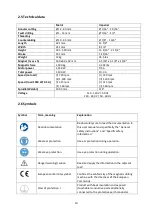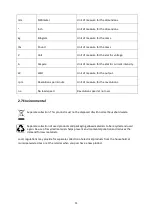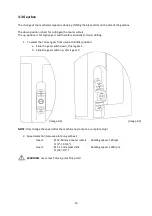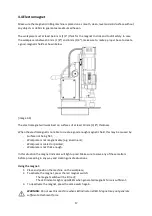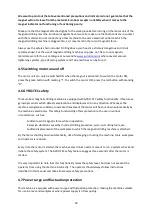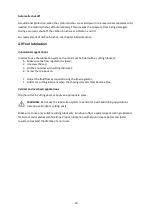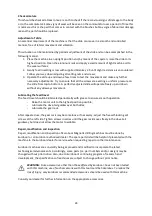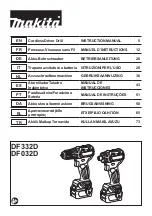
22
4.
Switch on the magnet and verify that the drill is in the right position and that the machine is
pushed tight against the work piece;
5.
Fill the holes of the spindle with oil;
6.
Switch the motor on and allow it to run at the required speed;
7.
Turn the feed handles to start drilling. Apply only a slight pressure when the annular cutter
touches the metal. Do not push the annular cutter with force into the metal;
8.
Apply a regular pressure while drilling. The drilling performance does not improve by putting
more pressure on the machine. Too much pressure will overload the motor and your annular
cutter will be worn sooner;
A continuous, non-discoloured iron swarf is a sign of correct drilling speed and a well-
cooled, sharp cutter. Let the cutter do the job and give it time to cut the metal!
9.
Stop drilling regularly, refill the holes of the spindle and continue drilling;
10.
Apply less pressure when the drill cuts through the material. The slug will be pushed out of
the cutter by the pilot pin;
11.
Turn the feed handles to put the motor in highest position and switch off the motor unit;
12.
Remove the burrs, metal chips and clean the cutter and surface without getting injuries.
Caution
: The slug can be sharp and very hot!
5.2 Twist drills
1.
Remove the spindle as described in paragraph 4.2 Spindle;
2.
Attach a drill chuck to the gearbox output shaft either directly or with an (extension) adapter;
3.
Precisely mark the center of the hole, use the tip of the twist drill to position the machine
correctly, with the tip of the twist drill to meet the marked center of the hole.
Steps 4-12: see paragraph 5.1 Annular cutters.
5.3 Countersinks
Thanks to its wide range of operating speeds, the machine can also be used for reaming or counter-
sinking. Follow the steps mention in paragraph 5.2 Twist drills.
Summary of Contents for ECO.40/2+
Page 27: ...27 8 Exploded views spare parts list 8 1 Exploded views...
Page 28: ...28...
Page 29: ...29...
Page 32: ...32 8 3 Wiring diagram...



